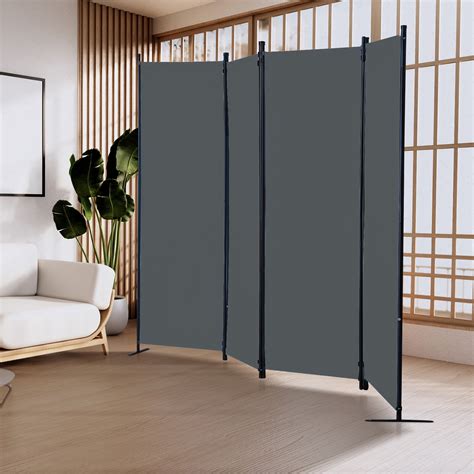Introduction

College dorm rooms can often feel cramped and chaotic, especially when multiple roommates share a small space. Dorm room dividers can provide a valuable solution to this problem, offering privacy, organization, and a more personalized living environment. This article will provide a comprehensive guide to dorm room dividers, including types, benefits, selection criteria, and practical tips for installation and use.
Types of Dorm Room Dividers
1. Freestanding Partitions:
- Curtains: Fabric curtains hung from a rod or ceiling track offer an easy and affordable way to create a visual barrier. They come in a variety of colors, patterns, and fabrics, allowing for customization.
- Folding Screens: Lightweight and portable, folding screens consist of multiple hinged panels that can be arranged in various configurations. They provide privacy while still allowing light to pass through.
- Room Dividers with Shelves: These dividers feature shelves or storage compartments, allowing for both privacy and additional storage space. They are ideal for dividing a room into separate study or sleeping areas.
2. Attachable Dividers:
- Hanging Dividers: Suspended from the ceiling, hanging dividers create a more permanent separation without taking up floor space. They are often made of fabric or vinyl and can be easily removed or adjusted.
- Wall-Mounted Dividers: Installed directly onto the wall, these dividers provide sturdy and secure privacy barriers. They can be made of wood, metal, or acrylic and typically come in solid or perforated designs.
Benefits of Dorm Room Dividers
- Privacy: Dividers create separate spaces within a shared room, allowing roommates to have their own private zones for sleeping, studying, or relaxing.
- Organization: Dividers can help to divide the room into functional areas, such as a sleeping area, study area, and storage space. This can improve overall organization and reduce clutter.
- Customization: Dividers can be customized to match the room’s décor or the individual roommate’s preferences, creating a more personalized living environment.
- Flexibility: Freestanding dividers can be easily moved and reconfigured, allowing for flexibility in room layout and privacy needs.
Selection Criteria for Dorm Room Dividers
When selecting a dorm room divider, consider the following factors:
- Room Size and Layout: Determine the size and shape of the room to ensure the divider fits properly. Consider the available floor space and whether a freestanding or attachable divider is more appropriate.
- Privacy Level: Assess the desired level of privacy. Curtains offer less privacy than solid partitions, such as wall-mounted or hanging dividers.
- Light Transmission: If natural light is important, choose dividers that allow light to pass through, such as curtains or perforated designs.
- Materials and Durability: Consider the durability of the divider, especially if it is likely to be moved or handled frequently. Fabric curtains are more susceptible to tearing, while wooden dividers are more sturdy.
- Budget: Dividers range in price depending on the type, materials, and features. Determine a budget and explore your options within that range.
Installation and Use of Dorm Room Dividers
1. Freestanding Partitions
- Curtains: Hang the rod or track at the desired height and attach the curtains using hooks or clips. Ensure the curtains are long enough to reach the floor or desired height.
- Folding Screens: Unfold the screens and arrange them in the desired configuration. Secure the panels together using hinges or locking mechanisms.
- Room Dividers with Shelves: Assemble the shelves or storage compartments according to the manufacturer’s instructions. Place the divider in the desired location and adjust the shelves as needed.
2. Attachable Dividers
- Hanging Dividers: Attach the mounting hardware to the ceiling according to the manufacturer’s instructions. Hang the dividers from the hardware using hooks or loops.
- Wall-Mounted Dividers: Mark the desired height and location on the wall. Install the mounting brackets and securely attach the divider to the brackets.
Common Mistakes to Avoid
- Choosing a divider that is too small or too large for the room.
- Installing a divider that blocks natural light, making the room dark.
- Purchasing a flimsy or poorly made divider that is not durable enough for dorm room use.
- Hanging curtains too high, which can create privacy issues.
- Neglecting to follow the manufacturer’s instructions for installation, which can lead to damage or safety hazards.
Frequently Asked Questions
1. What is the most affordable type of dorm room divider?
Folding screens and curtains are typically the most affordable options.
2. What is the most versatile type of dorm room divider?
Freestanding partitions, such as curtains and folding screens, are the most versatile because they can be easily moved and reconfigured.
3. How can I add privacy to my dorm room without a divider?
Consider hanging blackout curtains on the windows, using noise-canceling headphones, or creating a designated study space in a quieter part of the room.
4. Is it possible to DIY a dorm room divider?
Yes, it is possible to make your own divider using materials such as fabric, cardboard, or wood. However, it is important to ensure the divider is sturdy and safe.
5. Can dorm room dividers be used to create study spaces?
Yes, room dividers with shelves or partitions can be used to create a designated study area within a shared room.
6. What are some creative uses for dorm room dividers?
- Create a backdrop for photoshoots.
- Divide a room into sections for different activities, such as sleeping, studying, or socializing.
- Use a hanging divider to create a suspended reading nook.
- Attach a fabric panel to a wall-mounted divider to create a makeshift headboard.
- Create a room within a room by placing a freestanding partition in the center of the space.
Conclusion
Dorm room dividers are an effective and affordable way to enhance privacy, organization, and personalization in shared living spaces. By considering the factors discussed in this guide and following the recommendations for installation and use, students can create a more comfortable and functional dorm room environment.
